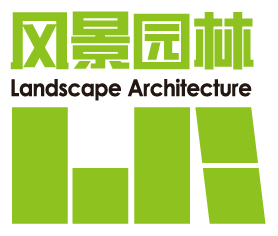Abstract:
Objective Against the escalating global climate crisis and intensifying resource constraints, this research aims to elucidate the theoretical framework and practical pathways for achieving green and low-carbon development within the context of Chengdu’s pioneering Park City initiative. Recognizing China’s critical shift from high-speed growth to high-quality development, where green transformation is the essential solution to resource and environmental constraints and the sole pathway to sustainable development (as emphasized in the Report to 20th CPC National Congress), the research positions cities — especially mega-cities like Chengdu — as the focal and most challenging arenas for this comprehensive socio-economic green transition. Building on President Xi Jinping’s concept of “Park City” first proposed in 2018 and Chengdu’s subsequent designation as a National Park City Demonstration Zone in 2022, the research investigates how Chengdu operationalizes Xi Jinping’s thought on ecological civilization at the urban scale. The core objective is to analyze Chengdu’s integrated approach, encapsulated in its “four-dimensional mutually reinforcing transition model” (spatial remodeling, industrial upgrading, transportation optimization, and energy innovation) and “triadic synergistic core mechanism” (ecological value realization, talent attraction activation, institutional safeguard upgrading), to overcome the historical legacy of extensive, inefficient urban development characterized by ecological space compression, industrial stagnation, transportation congestion, and soaring energy consumption. Ultimately, the research seeks to extract transferable insights and a replicable theoretical – practical framework for green and low-carbon transformation in other mega and large cities globally.
Methods/process Employing a mixed-methods approach, this research combines theoretical frameworks with empirical validation. 1) Policy synthesis & institutional analysis: The research examines Chengdu’s regulatory ecosystem, including the Policies on Green and Low-Carbon Development of Key Industries, the Guidelines on Near-Zero-Carbon Pilot Communities, and cross-departmental governance structures. 2) Case-based grounded theory: The research conducts longitudinal monitoring (2020–2025) of 29 near-zero-carbon pilot communities (e.g., Changshouyuan Community, Xinqiao Community), documenting interventions like district photovoltaic (PV) systems, low-carbon mobility retrofits, and circular economy projects. The research adopts a comprehensive case study methodology, deeply analyzing Chengdu’s systematic implementation of its Park City strategy since the issuance of the pivotal Decision of the CPC Chengdu Municipal Committee on Promoting Urban Green and Low-Carbon Development by Optimizing Spatial, Industrial, Transportation, and Energy Structures to Achieve Carbon Peaking and Carbon Neutrality Goals. This research forms a closed loop of green and low-carbon development, namely spatial foundation building – industrial decarbonization – transportation emission control – energy substitution, and accordingly summarizes its four-dimensional mutually reinforcing transition model as follows. 1) Spatial remodeling focuses on restructuring the coupled relationship of production – living – ecological spaces (PLE). At the macro-scale, numerous eco-friendly measures are implemented, such as protecting green ecological spaces and enabling the organic integration of natural landscapes with urban areas. At the micro-layout level, active promotion of industry – city integration has fostered intensive, efficient, green, and healthy urban operations. 2) Industrial upgrading is committed to synergizing “ecological industrialization” and “industrial ecologization”. On one hand, it abandons the “pollute first, treat later” model, vigorously developing green industries like energy conservation, environmental protection, and ecotourism. On the other hand, it drives the transformation and upgrading of traditional industries. 3) Transportation optimization at the systemic level is integrated within the comprehensive transportation system to enhance the convenience of green mobility. At the infrastructure level, the functionality and quality of slow-mobility scenes like greenways are improved to guide citizens towards choosing low-carbon travel modes (walking, cycling, etc.), thereby reducing transportation carbon emissions from the demand side. 4) Energy innovation addresses both the supply side, by building a multi-source complementary clean energy system to reduce reliance on traditional fossil fuels, and the consumption side, by bringing community-based energy conservation and low-carbon transition closer to citizens’ life, fostering a green transformation atmosphere with public participation.
Results/conclusion Chengdu’s integrated approach — spatially compact development, industrial symbiosis, electrified multimodal transportation, and distributed renewables — demonstrates a viable blueprint for mega-city decarbonization. Research results are mainly summarized as follows. 1) Systemic synergy is critical. Fragmented interventions (e.g., isolated renewable projects) yield suboptimal results, while spatial – energy – transportation – industrial coordination unlocks compound benefits. Institutional innovation drives transition. Polycentric governance (blending top-down targets with community participation) and mission-oriented finance de-risk green investments. The Chengdu model proves replicable in peer cities facing similar growth – climate dilemmas. 2) People-centered design ensures sustainability. Embedding co-benefits — cost savings (Xinqiao), health improvements (reducing PM2.5 by 22%), and circular lifestyles — builds public buy-in, turning climate action into a “new normal”. The results validate that Park City construction, as a concrete manifestation of green and low-carbon development guided by Xi Jinping’s thought on ecological civilization, effectively reconciles economic growth with environmental protection. It achieves a harmonious integration of park morphology and urban space, balancing ecology, lifestyle, and production, and realizing the symbiotic coexistence of humans and nature within an urban setting. Chengdu’s experience highlights that successful transformation requires systematic integration across space, industry, transportation, and energy, underpinned by innovative mechanisms for value realization, talent attraction, and institutional guarantee. This integrated approach facilitates a fundamental shift from extensive expansion to connotative development. As green and low-carbon development is a long-term endeavor, sustained efforts are crucial. Chengdu’s case, particularly as a mega-city model, offers valuable “Chinese Wisdom” and a practical “Chinese Solution” for global urban sustainability, providing a replicable reference for cities worldwide seeking to tailor similar transformations based on their unique resource endowments and developmental stages.

 下载:
下载:
